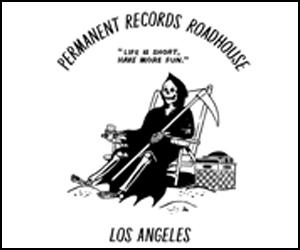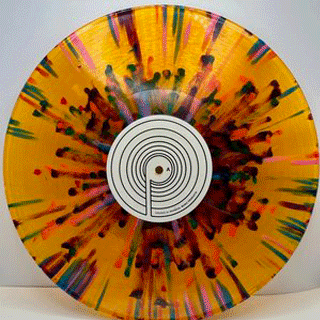Exclusive: The night Los Lobos opened for Johnny Rotten (An excerpt from the new book ‘Los Lobos: Dream in Blue’)
Kevin Bronson on
1

 Longtime L.A. music journalist Chris Morris’ “Los Lobos: Dream in Blue,” the first full-length critical history of the revered East Los Angeles band, is now available in bookstores (and via the University of Texas Press and Amazon).
Longtime L.A. music journalist Chris Morris’ “Los Lobos: Dream in Blue,” the first full-length critical history of the revered East Los Angeles band, is now available in bookstores (and via the University of Texas Press and Amazon).
In this exclusive excerpt from the book, Morris looks back at one of the band’s most critical, and infamous, live shows, which he witnessed from the audience. By the spring of 1980, Los Lobos — Cesar Rosas, David Hidalgo, Louie Perez, and Conrad Lozano — had been playing traditional Mexican and Latin music all over the East Side and up and down the California coast for nearly seven years. At the same time, the group, rockers in their high school days, had returned to their electric roots at a regular happy hour gig at Las Lomas, a Mexican restaurant in Anaheim Hills.
However, the Lobos’ first high-profile appearance before an L.A. rock audience was all acoustic, and it put them face-to-face with a hostile crowd that had turned out to see the first L.A. date by punk’s most notorious front man, Johnny Rotten of Public Image Ltd.
◊ ◊ ◊
As Los Lobos slowly made their transition from folk to rock and continued to ply their trade on the East Side, its members dipped their toes into the roiling waters of L.A.’s punk rock scene, which had lifted off in earnest with the 1977 opening of the Masque, the music’s first dedicated performance space, in Hollywood.
“We already knew about punk music and all of that shit,” Rosas says. “We were fans of that stuff already. We were listening to some of that hardcore stuff [in the van] on the way to Las Lomas. We’d listen to a real hardcore Mexican folk song, and the next song would be the fuckin’ Sex Pistols or the Cramps or something.”
The musicians were also making their way over to Hollywood from the East Side to check out the new music first-hand.
“Our dear friend Eddie Zaragoza had a car,” says Pérez. “I didn’t drive, and Dave didn’t drive then, either. Eddie was way into all the stuff that was happening, the scene out there. We would regularly take a trip with Eddie over to the Hollywood scene and check that out. We’d see the Plugz and the Rebel Rockers, all kinds of shit that was going on at the time. I think it was through Jesse Velo from Los Illegals that I met Tito Larriva.”
Along with Alice Bag (née Alicia Armendariz), front woman of the Bags, and the members of the all-Chicano, Chula Vista-bred quartet the Zeros, Humberto “Tito” Larriva was one of the first prominent Latino performers on the L.A. punk scene. Born in Ciudad Juárez, Chihuahua, Larriva had arrived in L.A. in 1975. The singer-guitarist-actor (later featured as a heavy in several of director Robert Rodriguez’s films) had founded the wound-up punk trio the Plugz, sometimes billed as Los Plugz, with Chicano drummer Charlie Quintana and Anglo bassist Barry McBride in 1978. That year, a three-track single by the band became the second release (following a 45 by the Germs) from Slash Records, the fledgling imprint of the like-named L.A. punk magazine. It prefaced the Plugz’s self-released 1979 album Electrify Me, which included a high-velocity, lyrically retooled version of Ritchie Valens’ “La Bamba.”
It was Los Lobos’ connection with Larriva that led to the group’s first high-profile show outside of East L.A. In the spring of 1980, the Plugz were booked as an opening act on the first local performance by Public Image Ltd. (PiL), the confrontational British quartet fronted by John Lydon, theretofore better known as Johnny Rotten, lead vocalist of the notorious punk act the Sex Pistols. The date re-inaugurated concert events at the Olympic Auditorium, an ancient boxing and wrestling venue just south of the Santa Monica Freeway near downtown L.A., which had briefly served as a music venue in the late ‘60s.
After a local act called the .45s abandoned their slot as an opening act, Larriva called Pérez and asked if Los Lobos would be interested in appearing on the bill – but as an acoustic act performing their set of Mexican music.
“Tito was the culprit, and I was his co-conspirator, because I agreed to do it,” Pérez says. “I never asked Tito if he in fact set us up. He called up and said, ‘Hey man, a band fell out, do you want to do this gig?’ I don’t know if he was on the other end of the phone, silently going, ‘Hee hee!’ But I said, ‘Yeah, fine.’”
The Sex Pistols’ first – and, at that point, last – U.S. tour in early 1978 had skipped Los Angeles; the nearest date (their final show before the group imploded) had taken place that January at Winterland in San Francisco, where audience members had demonstrated their affection by throwing everything they had in their possession at the stage. Los Lobos sensed what they could be in for opening for Johnny Rotten’s first L.A. engagement – the PiL show was certain to attract the most aggressive element of the punk audience, who wanted to finally see English punk’s greatest icon in person and could potentially restage a replay of the chaos at Winterland. Hidalgo says, “All these people who had missed the Sex Pistols, it was the next best thing for them.”
“We knew that they threw shit, and they spit at people,” Pérez says. “[We thought,] we’re taking a big chance here, but we’re just gonna do it.” Rosas adds, “I told Tito, ‘Are you sure, man? I know what the fuck’s gonna happen – we’re gonna go out there and it’s gonna be a battle zone, man. Imagine a bunch of Mexicans playing fucking traditional music. They are gonna have a field day with us.’”
On May 4, 1980, I attended the PiL show at the Olympic as the critic for the local alternative weekly the Los Angeles Reader. I had never visited the 55-year-old venue before, and it was a forbidding place. Fading photos of dimly recalled boxing luminaries lined its gray walls. Its floors were dark and sticky with the residue of several decades of spilled drinks. The air was thick with old smoke and violence.
Los Lobos del Este de Los Angeles – who had not been advertised as an opening act, owing to their late addition to the bill – took the stage clutching their acoustic instruments, bearded and long-haired, dressed in traditional Mexican guayabera shirts. The audience instantly reacted as one, and launched everything they had in their hands, and in their mouths, at the band.
Pérez remembers, “We went up on stage, and we went into the first couple notes of the first song, and I swear I could feel a rush of air come from the audience, from all of the middle fingers that went up at the same time. They were throwing shit like crazy. We didn’t play a whole set, because by the time the serious projectiles started to fly, we booked. I don’t know how many songs we did, maybe three, maybe four of ‘em. Then we beat it. They started throwing real shit at us, and it hurt.”
“The pennies and the dimes started coming in, and then the quarters started coming in,” Rosas recalls. “And I remember they threw this big wad of wet paper, and it hit Dave in the face.”
Lozano says with a laugh, “I was terrified. But we stood there, man. We fucking stood there. We said, ‘Fuck this shit. Just keep doing it. Let’s shove it down their throats.’ So we did, man, until the bottles started flying. When the bottles started to fly, we said, ‘OK, time to go!’ Yeah, it was scary.”
“Conrad was playing a guitarron,” Pérez says, “and for months, maybe years after that show, it still had shit rattling around inside it that people had managed to [throw] into it.”
My guest at the PiL show was a young saxophonist from Philadelphia who was beginning to make a name for himself as a sideman with a number of local punk bands. Recalling the gig later, Steve Berlin said, “I just remember the sort of weird Roman Coliseum-like vibe of that place. It seemed like the Christians and the lions, and they were the Christians. I remember them standing there somewhat impassively, just taking fusillade after fusillade of crap from the audience. Spit and bottles and cups.”
By any measure, the PiL show was a catastrophe for the band, but they left the Olympic with a new resolve.
Says Pérez, “Because it was kind of a big deal for us, our wives came with us, and everyone in the family came, and they were all hanging out in the wings of the backstage area. We went around the curtain and went back. Our families were in tears. I had spit hanging from my chin. But of course, we had this adrenalin rush, because it was like being on a roller coaster or something.
“I suppose most people would have run back to East L.A. But no, we were kind of invigorated by it. We were taken aback a bit by the violence, and the formal rejection. But we didn’t feel like we were beaten. We said, ‘OK, let’s move some shit around, and go back.’”
||| Stream: “Made to Break Your Heart” (via Billboard) and the title track from “Gates of Gold” (via the Wall Street Journal). “Gates of Gold,” the first Los Lobos studio album in five years, will be released Sept. 25 by 429 Records.
||| Live: Los Lobos performs a free concert at Levitt Pavilion MacArthur Park on Sept. 19. Chris Morris will appear with the band at a special sold-out event at the Grammy Museum in Los Angeles on Sept. 27.





[…] Los Lobos, the legendary East L.A. band and the subjects of a new book, celebrate the release of their new album “Gates of Gold” with a free show at Levitt […]